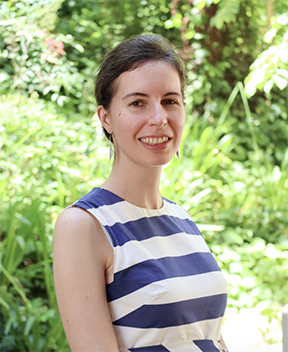Inside the Laboratory: The McCall Group at San Diego State University
Inside the Laboratory is a joint series with LCGC and Spectroscopy, profiling analytical scientists and their research groups at universities all over the world. This series spotlights the current chromatographic and spectroscopic research their groups are conducting, and the importance of their research in analytical chemistry and specific industries. In our first edition of “Inside the Laboratory,” Laura-Isobel McCall, PhD, an associate professor of chemistry at San Diego State University, discusses her group’s most recent work using “chemical cartography” in order to perform effective liquid chromatography–mass spectrometry (LC–MS) data acquisition.
The McCall Laboratory is part of the San Diego State University Department of Chemistry and Biochemistry, in San Diego, California. By using metabolomics technologies such as chemical cartography, which is the study of chemical interactions in three-dimensions (3D), the McCall Laboratory attempts to further understand why certain disease symptoms develop in certain locations in the body, and how we can reduce drug development costs and implement effective antimicrobial treatments.
SDSU Campus. San Diego State University college campus | Image Credit: © mdurson – stock.adobe.com

Laura-Isobel McCall, PhD, associate professor in the Department of Chemistry and Biochemistry at San Diego State University, is the principal investigator. McCall received her Ph.D at McGill University, in Montreal, Quebec, Canada, and completed her Postdoc training at the Center for Discovery and Innovation in Parasitic Diseases at the University of California, San Francisco and the University of California, San Diego. After her Postdoc, McCall served as an Assistant Professor and Associate Professor at the University of Oklahoma before joining San Diego State University as an Associate Professor in 2023. She was a 2021 Burroughs Welcome Investigator in the Pathogenesis of Infectious Diseases and received one of the 2023 ACS Infectious Diseases Young Investigator Awards.
Dr. Laura-Isobel McCall of San Diego State University | Photo Credit: © Bryana Quintana

Recently, McCall took some time to sit down with LCGC to briefly highlight her group’s recent work and the importance of her group’s work within the broader field of analytical chemistry and drug development.
Can you talk about the analytical techniques that your group used in your most recent research project?
We use an approach that I call “chemical cartography.” This involves systematically sectioning organs into small pieces, extracting metabolites from each piece, and then performing liquid chromatography-mass spectrometry (LC–MS) data acquisition. We then computationally reconstruct the data back in three dimensions (3D) to see how metabolism changes spatially during infection, and where those metabolic changes are restored (or not restored!) following treatment.
Can you explain the importance of your research within the broader field of analytical chemistry or in a specific industry/application?
We live in a 3D world! My research uses bioanalytical chemistry techniques to gain fundamental insights into the spatial relationship between metabolism and disease. Metabolism in the body takes place within a complex spatial context, where different cells, tissues, and organs interact and communicate with each other to shape health and disease. In addition, some tissue sites are critical and cannot tolerate any metabolic deviation from normal, and other sites are more tolerant. Infection can cause highly localized metabolic changes that we can link to disease symptom localization. We’ve also recently become interested in how metabolism reshapes itself in a spatially dependent manner during the recovery stages after an infection, and how that can drive persistent or chronic disease symptoms. Understanding which sites and which metabolic pathways are more or less resilient can have big implications for how we think about drug development in a spatially targeted and personalized way. My research and chemical cartography enables us to answer these big questions.
How do you stay updated with advancements in analytical chemistry techniques and technologies? Can you discuss a recent innovation or development that you find particularly impactful or exciting?
I have PubMed and Google Scholar alerts for all the different topics I work on, and citation alerts for key papers in the field. Social media is also good to hear what other colleagues find most exciting! In metabolomics, data handling and data processing are some of the biggest challenges, so I’m always excited to read about new data analysis techniques. I really enjoyed reading recent work in Analytical Chemistry by Bishop and others on the variability of detected lipid adducts, and approaches to combine detected adducts to improve quantification accuracy (1). New ways to mine big data sets are also interesting, and so I’m especially excited to try out MicrobeMASST, by Zuffa and others (2).
To download the PDF version of this Inside the Laboratory Q&A, click here.References
- Bishop, L. M.; Shen, T.; Fiehn, O. Improving Quantitative Accuracy in Nontargeted Lipidomics by Evaluating Adduct Formation. Anal. Chem. 2023, 95 (34), 12683–12690. DOI: 10.1021/acs.analchem.3c01221
- Zuffa, S.; Schmid, R.; Bauermeister, A. A Taxonomically-informed Mass Spectrometry Search Tool for Microbial Metabolomics Data. bioRxiv, 2023, preprint. DOI: 10.1101/2023.07.20.549584
New Method Explored for the Detection of CECs in Crops Irrigated with Contaminated Water
April 30th 2025This new study presents a validated QuEChERS–LC-MS/MS method for detecting eight persistent, mobile, and toxic substances in escarole, tomatoes, and tomato leaves irrigated with contaminated water.
Accelerating Monoclonal Antibody Quality Control: The Role of LC–MS in Upstream Bioprocessing
This study highlights the promising potential of LC–MS as a powerful tool for mAb quality control within the context of upstream processing.
University of Tasmania Researchers Explore Haloacetic Acid Determiniation in Water with capLC–MS
April 29th 2025Haloacetic acid detection has become important when analyzing drinking and swimming pool water. University of Tasmania researchers have begun applying capillary liquid chromatography as a means of detecting these substances.
Prioritizing Non-Target Screening in LC–HRMS Environmental Sample Analysis
April 28th 2025When analyzing samples using liquid chromatography–high-resolution mass spectrometry, there are various ways the processes can be improved. Researchers created new methods for prioritizing these strategies.

.png&w=3840&q=75)

.png&w=3840&q=75)



.png&w=3840&q=75)



.png&w=3840&q=75)


